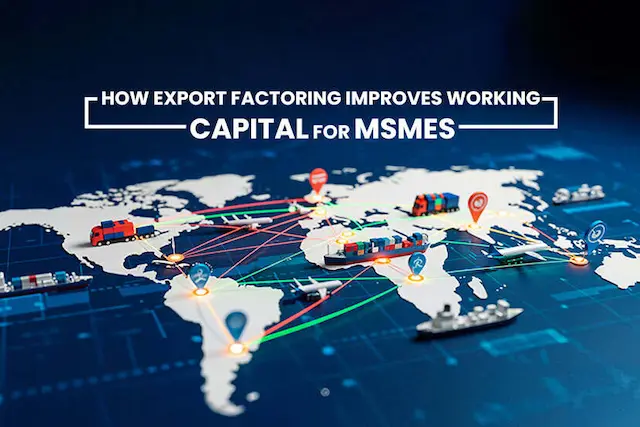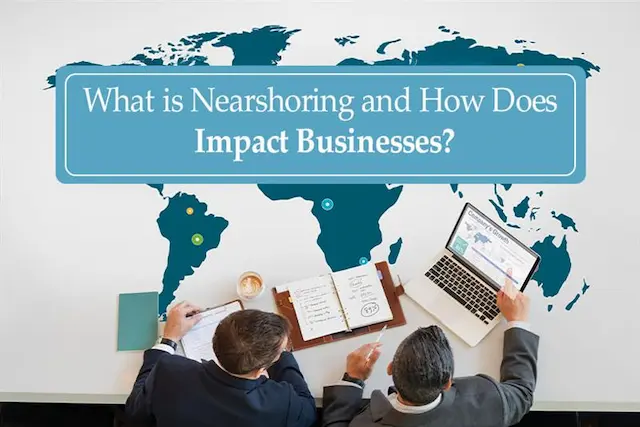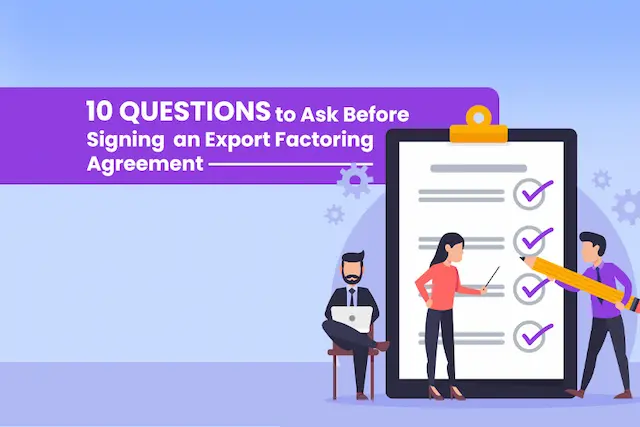Manufacturers trying to expand abroad frequently struggle to manage limited cash flow. Businesses that sell to overseas customers often have to survive lengthy payment terms before receiving payment in full. Many companies solve their cash flow struggles by utilising trade finance options such as export factoring or PO financing. The question is: which method should you adopt to maximize your company’s profitability?
We’ll explore these two financing options and explain which one is best for your manufacturing business.
What is Export Factoring?
Export factoring involves selling your export invoices to a financing company at a rate lower than their total value. The factor takes responsibility for the collection of payments from the buyer overseas.
The advantage it offers is quick access to working capital. On the other hand, the company can secure its advance within a few days of exporting its goods. Business owners can immediately use the profits to grow their business or ensure smooth running.
What is PO Financing?
A financing company covers costs for the manufacturer before the customer pays. Suppliers can gain access to funding to complete a large order by working with a PO finance company. They make payments to the supplier before the company begins the order fulfillment process. After the purchaser makes the payment, the PO financier keeps their commission and pays the remaining sum to the business.
It saves many small- to mid-sized manufacturers from turning down large orders simply because they lack sufficient working capital.
Core Differences Between the Two
Both methods boost cash flow, but one is applicable earlier in the sales process compared to the other.
Export factoring is used when financing occurs after goods are transported to the customer overseas. The exporter should have an invoice and be reasonably confident in the customer’s creditworthiness. This type of finance suits organizations that export regularly and need additional cash flow quickly.
On the other hand, PO financing enables companies to get the funds they need before products leave the factory. The risk is calculated largely on the customer’s purchasing power and the strength of the purchase order they’ve made. Therefore, PO finance is ideal for firms that lack sufficient capital yet have confirmed sales to creditworthy clients.
When Should You Choose Export Factoring?
If you find yourself regularly exporting goods and experiencing delays in payments from overseas clients, export factoring may be the right choice for you. You can use the advance payment to improve your cash flow and ensure that you always have plenty of working capital. You also benefit from bad credit risk, as most factoring companies provide credit protection services.
Repayment in export factoring is linked to the value of your overall sales receivables, which means default risk is traditionally lower with a business loan.
When is PO Financing a Better Fit?
PO financing is a great option when you receive large international orders but lack the resources to complete them. Smaller businesses and expanding manufacturing concerns can benefit the most from this approach.
This option allows you to accept bigger contracts even if you don’t have enough capital to help your business grow and expand.
Industries That Benefit Most
You can find both methods in many sectors like textiles, electronics, auto components, and consumer goods. Your decision should be based on the characteristics of your exports.
Exporters working within repeat arrangements or with established buyers often choose export factoring. Companies with seasonal or customized orders demanding upfront payments may prefer payment on order financing.
Risk and Cost Considerations
It is important to understand both the costs and the risks involved with each method so that you can select the most appropriate solution. You usually have to provide an upfront payment and a fee calculated according to your customer’s credit history.
PO financing, however, tends to be more expensive since the financier must pay the supplier upfront and assumes greater liability. Being able to satisfy increased demands can exceed the expense, particularly for companies seeking to enter new markets.
Documentation and Process
Both export factoring and purchase order finance have low warranty costs and demand various forms of documentation. Factoring export documents includes invoices, export contracts, and shipping confirmations. You need to have purchase orders, supplier quotes, and proof of your capacity to produce the goods when applying for PO financing.
Having the correct documents in order at the start will help ensure a streamlined application and reduce the chance of any delays.
Making the Final Choice
Considering the circumstances of your company, which solution is most suitable for your needs? Let’s find out –
- Use export factoring when your main problem is receiving payments from customers who are taking your products outside the country.
- Go with PO financing when meeting an urgent and significant export order is your biggest obstacle.
Your decision will depend on your business’s cash flow habits, tolerance for risk, the dependability of your clients, and the point during production or shipping where you need funds.
Choosing the Right Finance Tool for Your Manufacturing Exports
Both export factoring and purchase order financing offer ways to boost cash flow, give you more freedom to handle deliveries, and help your manufacturing company expand internationally with greater security. Knowing when to apply each method gives your trade finance strategy a major advantage.
Choosing the right financing solutions helps you overcome payment delays, establish greater business credibility, and increase future earnings.
Credlix offers innovative financing solutions to accelerate the growth of your export business, providing greater agility and efficiency. You can get seamless export financing without collateral, and no long waits. It provides personalized assistance to let manufacturers increase exports without worrying about their finances. We support businesses of all sizes in maintaining a robust working capital flow that can adapt as your operations grow.





